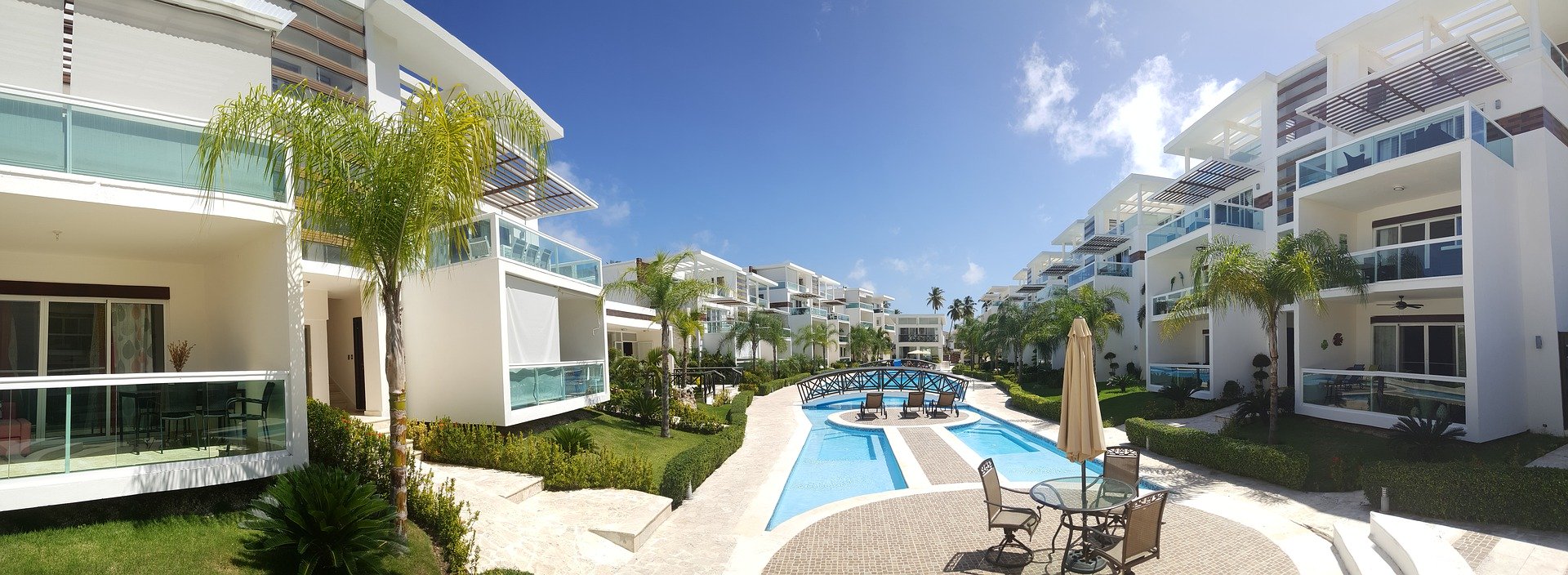You are ready for apartment syndication investing. You have made contact with several multifamily syndicators, like them and trust them based on their transparency and past performance. You are finally invited to invest with them. Two of the sponsors currently have projects they are working on and need to get funded. They each conduct investor presentations on Zoom, and you are able to attend them both. You come away with a difficult decision.
The projects are in the same part of the country and have a similar number of units. You have $100K to invest and that happens to be the minimum investment in both of the syndications. You are faced with a choice between the two. Let’s examine a couple of examples of good deals and discuss how to sift and sort through the available data to make a sensible decision on which one gets your funding.
Note: The apartment syndication investing examples below are based on real examples of a decision I had to make recently. Both were in South Carolina, and were situated in similar neighborhoods. Identifying details have been omitted.
Apples to Apples
When you receive the investor packet, known as the OM or offering memorandum, from the sponsor, the apartment syndication investing information will be presented in different ways and varying order. Your job is to gather the facts so that you can make an apples-to-apples comparison of the pro forma info presented. The information will be presented in such a way as to make each of your choices hard to resist. But resist, you must. (Thanks Yoda.)
Option A
This 82-unit apartment community built in 1970 is a value-add opportunity, and located in the booming Greenville, SC metropolitan statistical area near a major university. It has a good mix of 2-bedroom, 1- & 1.5-bathroom, units. The sponsor’s plan over the first 3 years is to upgrade the interiors and exteriors, as well as add amenities like a dog park and sand volleyball court to the property. Doing this over a long period will help maintain a high level of occupancy. As units are updated, they will be offered to current and new tenants with a priority toward improving the tenant base and increasing rental rates to the at-market level. The capital expense (cap-ex) budget will be used to replace roofs, patch and seal the parking lot, improve landscaping, and rebrand the property. Distributions of profits to investors will start in year 2.
Back story on this property: The seller was originally going to demolish this apartment complex in favor of building high-density student housing from the ground up. Their plan was to avoid making improvements to the existing property and only rent out the good units until the demolition began. There was a 50% vacancy due to the deferred maintenance. As it turns out, the city council had a moratorium on new student housing starts, so they opted to sell.
- Apartment Syndication Investing Opportunity: 82 Units, Class B-
- Purchase Price: $3.5M
- Total Capital Raise: $1,715,800
- Cap-Ex Budget: $1,200,800
- Average Annualized Return (AAR): 16.3%
- Internal Rate of Return (IRR): 13.8%
- Cash on Cash Return (CoC): 6.7%
- Return on Capital (Equity Multiple): 1.65x
- Projected Investment Period: 4 Years
- Minimum Investment: $50,000
- Maximum Investment: $400,000
- Ownership Split: 80% investors – 20% managing members
Option B
This apartment complex was built in 2018 and is considered an institutional class A asset in a rapidly growing, in-demand South Carolina market with affluent resident demographics. Its 2- & 3-bedroom, 2-bathroom units are in great shape and just need a few more upgrades. In fact, half of the units have already received upgrades that show proof-of-concept for commanding a $100 rent premium over the classic units. The construction budget will be used to renovate the remaining 50% of the classic units, add washers and dryers to some of the units, upgrade the dog park, refinish the swimming pool, and add a coffee bar and package locker room to the common area. All these improvements will allow the project to receive rent premiums of $105-$357 over where they are now, and will still be lower than comparable properties. Distributions of profits to investors will start immediately.
- Apartment Syndication Investing Opportunity: 144 Units, Class A
- Purchase Price: $27,050,000
- Total Capital Raise: $12,000000
- Cap-Ex Budget: $250,000
- Average Annualized Return (AAR): 16.5%
- Internal Rate of Return (IRR): 13.2%
- Cash on Cash Return (CoC): 7.1%
- Return on Capital (Equity Multiple): 2.16x
- Projected Investment Period: 7 Years
- Minimum Investment: $100,000
- Maximum Investment: $2,000,000
- Ownership Split: 70% investors – 30% managing members
Advantages of Each
One of the advantages option B has over option A is that it is a newer property and has fewer maintenance needs. As such it is a less risky apartment syndication investment. No major renovations were needed.
Because the option A property was in disrepair and had such low occupancy, the syndication team was able to purchase the property for a really low price. Though the renovation costs worked out to be about $14K per unit, this still presented a golden opportunity for adding value and profits.
Disadvantages of Each
Because of option B’s status as a class A property, there is concern about people moving out, especially during the recovery from Covid-19, when they can no longer pay the higher rents. During hard financial times, people tend to seek cheaper places to live and move from class A properties to class B areas. Under normal circumstances, this would not be a concern because the demographics fully support the rent levels. This was foremost in my mind when deciding between the 2 projects.
Renovations to option A will take several years because of the heavy lift. While this is happening, a big challenge will be to drastically reduce the high vacancy with high-quality tenants. This is not something that can happen overnight. Also, option A will not provide equity investors any cash flow until somewhere into the second year.
Gut Feeling
I felt that option B was raising too much equity compared to what was going to be used directly in the project. In other words, the apartment syndication investing underwriting was so conservative that quite a bit of extra money was being raised in order to fund contingencies and reserves. My thought was that 20% of the equity raise was not really being put to work, and was there to create immediate returns to investors during the year or two that is would take to create actual positive cash flow.
The option A property certainly presented a lot of work ahead for the team, but as they are fairly young and hungry, I felt that they would be able to work their plan
Both syndication teams are very experienced and have other similar multifamily projects nearby, which helps them achieve bigger economies of scale by enabling better use of personnel and greater buying power for materials. Both of these properties have strong fundamentals which help mitigate risks.
Tip: After you have weighed all the facts, sometimes all you have left is the feeling in your gut. I usually trust my gut feelings, and I suspect you do too.
Apartment Syndication Investing Decision
Which one did I choose? (For that matter, which one did you think was the better option?) It wasn’t just the investment opportunity that I considered – I looked at the syndication team very closely as well. When you are reviewing opportunities, you have to look at the complete picture – the team as well as the apartment syndication investing opportunity.
I chose option A and have not regretted it.
Helpful Reading
The Hands-Off Investor: An Insider’s Guide to Investing in Passive Real Estate Syndications by Brian Burke


